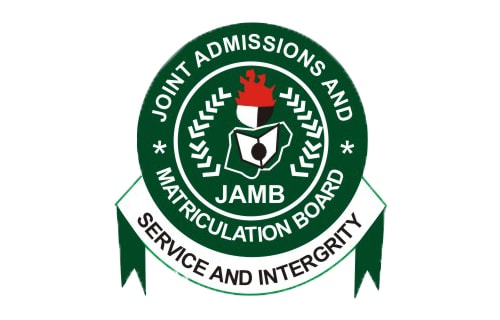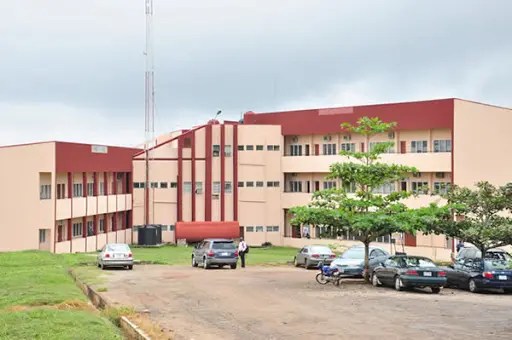
The current official Geography JAMB Syllabus for UTME candidates is now available. The JAMB syllabus contains all the topics UTME candidates writing the JAMB CBT exam are expected to cover before the examination to ensure they are adequately prepared for the examination.
If you have been looking to get the JAMB Syllabus online, look no further. We understand that JAMB usually provide this syllabus for candidates in a CD. However, we have discovered that many candidates are unable to access to access this due to one reason or the other.
We have therefore decided to make it easier for you by making it available online so you can view it using any device that can access internet including your mobile phones.
Here we have provided you the detailed, complete and current JAMB Syllabus for Geography. To view the JAMB Syllabus for all subjects, go to: Official JAMB Syllabus For All Subjects
Current JAMB Syllabus – Geography
The aim of this 2016/2017 Unified Tertiary Matriculation Examination (UTME) syllabus in Geography is to prepare the candidates for the Board’s examination. It is designed to test their achievement of the course objectives, which are to:
1. handle and interpret topographical maps, photographs, statistical data and diagrams and basic
field survey;
2. demonstrate knowledge of man’s physical and human environment and how man lives and earns a living on earth surface with special reference to Nigeria and Africa;
3. show understanding of the interrelationship between man and his environment;
4. apply geographical concepts, skills and principles to solving problems.
5. understand field work techniques and the study of a local area in the field.
Current JAMB Syllabus – Geography: DETAILED SYLLABUS/CONTENTS
| TOPICS/CONTENTS/NOTES | OBJECTIVES |
I. PRACTICAL GEOGRAPHYA. Maps | Candidates should be able to: Ai define and identify different types and uses |
B. Scale and measurementdistances, areas reduction and enlargement, directions, bearings and gradients with reference to topographical maps. | Candidates should be able to: Bi apply the different types of scale to distances and area measurement; |
C. Map reading and interpretation;drawing of cross profiles, recognition of intervisibility, recognition and description of physical and human features and relationship as depicted on topographical maps. | Candidates should be able to: Ci illustrate the relief of an area through profile |
D. Interpretation of statistical data;maps and diagrams | Candidates should be able to: Di Compute quantitative information from statistical data, diagrams and maps, |
E. Elementary Surveying;chain and prismatic, open and close traverse, procedure, problems, advantages and disadvantages. | Candidates should be able to: Ei. analyse the principle and procedure of each |
F. Geographic Information System (GIS):components, techniques, data sources, applications | Candidates should be able to: Fi. Understand GIS and its uses. |
II. PHYSICAL GEOGRAPHYA. The earth as a planeti. The earth in the solar system, rotation and revolution; | Candidates should be able to: Ai identify the relative positions of the planets |
B. The Earth Crusti. The structure of the earth (internal | Candidates should be able to: Bi compare the internal and external |
C. Volcanism and Earthquakesi. landforms associated with volcanic activities | Candidates should be able to: Ci. explain the processes of volcanic eruptions and |
D. Denudation processes in the tropicsi. weathering | Candidates should be able to: Di. identify the agents of denudation |
E. Water Bodiesi. Oceans and seas (world distribution, salinity and uses) | Candidates should be able to: Ei locate oceans and seas on the globe; |
F. Weather and Climatei Concept of weather and climate | Candidates should be able to: Fi. differentiate between weather and climate; |
G. Vegetationi Factors controlling growth of plants | Candidates should be able to: Gi trace the factors controlling the growth |
H. Soilsi. Definition and properties | Candidates should be able to: Hi classify soils and their properties; |
I. Environmental Resources;i Types of resources (atmospheric, land, soil, Vegetation and minerals) | Candidates should be able to: Ii. interpret the concept of environmental |
J. Environmental interaction:i Land ecosystem | Candidates should be able to: Ji. identify the components of land |
K. Environmental hazards:i. Natural hazards (droughts, earthquakes, volcanic eruptions, flooding) | Candidates should be able to: Ki identify the natural hazards and their causes; |
L. Environmental Conservation | Candidates should be able to: Li. Explain with examples environmental |
III. HUMAN GEOGRAPHYA. Populationi. World population with particular reference to the Amazon Basin, N.E. U.S.A., India, Japan and the West Coast of Southern Africa. | Candidates should be able to: Ai. Define different concepts of population; |
B. Settlement with particular reference to Western Europe, the USA, Middle East and West Africa:i. Types and patterns: rural and urban, dispersed, nucleated and linear; | Candidates should be able to: Bi differentiate between types of |
C. Selected economic activitiesi. Types of economic activities: primary, secondary, tertiary and quartnary; | Candidates should be able to: Ci. identify the types of economic activities; |
IV. REGIONAL GEOGRAPHYA. Broad outline of Nigeriai. Location, position, size, political division | Candidates should be able to: Ai describe the location, size and political |
B. Economic and Human Geography:i. Agricultural Systems: the major crops | Candidates should be able to: Bi. compare the farming systems practiced in |
C. ECOWASi. Meaning and objectives | Candidates should be able to: Ci. State the meaning, purpose and objectives; |
Current JAMB Syllabus – Geography: RECOMMENDED TEXT BOOKS
Adeleke, B.O. Areola .O. 2002 and Leong, G.C. Certificate Physical and Human Geography for Senior Secondary School (West African Edition), Ibadan: Oxford.
Bradshaw, M. et al (2004) Contemporary World Regional Geography, New York: McGraw Hill
Bunet, R.B and Okunrotifa, P.O.(1999) General Geography in Diagrams for West Africa, China: Longman.
Collins New Secondary Atlas, Macmillan
Fellman, D. et al (2005) Introduction to Geography (Seventh Edition) New York: McGraw Hill
Getis, A. et al (2004) Introduction to Geography (Ninth Edition) New York: McGraw Hill
Iloeje, N. P(1999) A New Geography of West Africa, Hong Kong: Longman
Iloeje, N.P(1982) A New Geography of Nigeria (New Education), Hong Kong: London
Nimako, D.A. (2000) Map Reading of West Africa, Essex: Longman.
Okunrotifa, P.O. and Michael S. (2000) A Regional Geography of Africa (New Edition), Essex: London.
Udo, R.K(1970) Geographical Regions of Nigeria, London: Longman.
Waugh, D. (1995) Geography an Integrated Approach (Second Edition), China: Nelson
Wisdomline Pass at Once JAMB.
Adegoke M.A (2013), A Comprehensive Text on Physical, Human and Regional Geography.




